It’s amazing what you see through the crack in a fence. I was in Devizes recently when I looked through one and saw a collection of rusting cars, some dating back to the 1950s.
I was driving to Caen Hill with its flight of 20 canal locks – but first, I thought, I must find out about these old motors.
So I took the next turn and found myself in the yard of a big waste management company. A chap appeared from one of the buildings to ask if he could help. I asked him who the old cars belonged to.
“They’re the boss’s,” he said. “He’s going to put them in a museum.” Unless I’m opening my wallet, it’s not often my heart skips a beat. It skipped one then. Unfortunately, it was pouring with rain. I drove off, determined to return.
Of course, I shouldn’t have been surprised by the sight of all those old cars. The fact is, scrap cars are a big problem. In 2012, councils reported 40,876 cars as having been abandoned. By 2016, this figure had risen to 147,616.
But these cars are just the ones councils know about. Away from their prying eyes are thousands more relics – some, like the ones in Devizes, locked away in yards or outbuildings, but many more parked up on driveways or in gardens where they sit rotting, often to local residents’ frustration.
Why do people hang onto their old cars when they could have traded them in, sold them or scrapped them? Two car hoarders I encountered give their reasons later, but first I meet that boss of a Devizes-based waste management company who decided to save some old cars rather than crush them...
THE NEARLY CAR MUSEUM
Nigel Grist is the owner of Grist Environmental, a waste management and recycling company he founded 45 years ago with £100 and a 15 cwt Ford Thames pick-up. Those were his cars I’d seen, Nigel tells me when I return to Devizes to meet him. Nigel says he’s been collecting scrap cars ever since he started his business. Those that are too good for the crusher he puts to one side. He has a bodyshop that has restored one or two and plans to display these, along with the most interesting unrestored ones, in a new eco-friendly museum he intends to build on a 50-acre site outside Devizes.
Barn finds of old cars are often in the news but what I see when I round a corner in Nigel’s yard is more like a field find. The few cars I’d glimpsed through the fence that day were just the tip of a ‘carberg’ of old British metal.
At the back, a gaggle of Minis; I stop counting at 18. In front of them, an ocean of cars including two drab green Ford Popular 103Es circa 1953. One is merely a shell but with what appears to be a reconditioned engine and new front chassis rails, the other all but complete – and both separated by a shabby Morris Marina van of the 1980s.
Close by them, that old bank manager’s special: a smart, black Rover P4 (circa 1950s) towering over a bright red Morris Minor pick-up. Elsewhere, a Sunbeam 90 from the mid-1950s, and a remarkably well-preserved mid-1960s Vanden Plas Princess 4-litre R (the only mass-produced model that Rolls-Royce permitted to be powered by one of its engines) parked in front of a decaying Triumph 1300. Just ahead of them, the perfectly salvageable shell of what I reckon is a two-door Hillman Avenger.
 A surprisingly complete-looking Morris Minor stands slightly to one side of the pack. Its green paint has faded but its chrome brightwork gleams and what rust there was appears to be superficial. The interior is amazing: no tears, no missing or sagging trim, and fittings all securely anchored.
A surprisingly complete-looking Morris Minor stands slightly to one side of the pack. Its green paint has faded but its chrome brightwork gleams and what rust there was appears to be superficial. The interior is amazing: no tears, no missing or sagging trim, and fittings all securely anchored.
Nigel and his project manager, Jonathan Taylor, chuckle as I stagger among the treasures. Scimitar GTs, Triumph 2000s, a lovely burgundy-coloured Jaguar XJS, more Minis including a couple of rare vans and one converted to accept a wheelchair, Austin Ambassadors, a couple of Mk1 Range Rovers, Triumph Spitfires beyond saving... “There are more in the shed, behind the Bedford H A van and flat-bed truck I bought the other day,” says Nigel. As my eyes adjust to the gloom inside the shed, I realise I’d nearly walked into a mint Austin Princess.
“It’s a one-owner car, done 6000 miles,” says Nigel. “We’ve not done a thing to it. Its lady owner thought it was too big, put it in her garage and forgot about it. She sold it to me when she moved into a smaller place.”
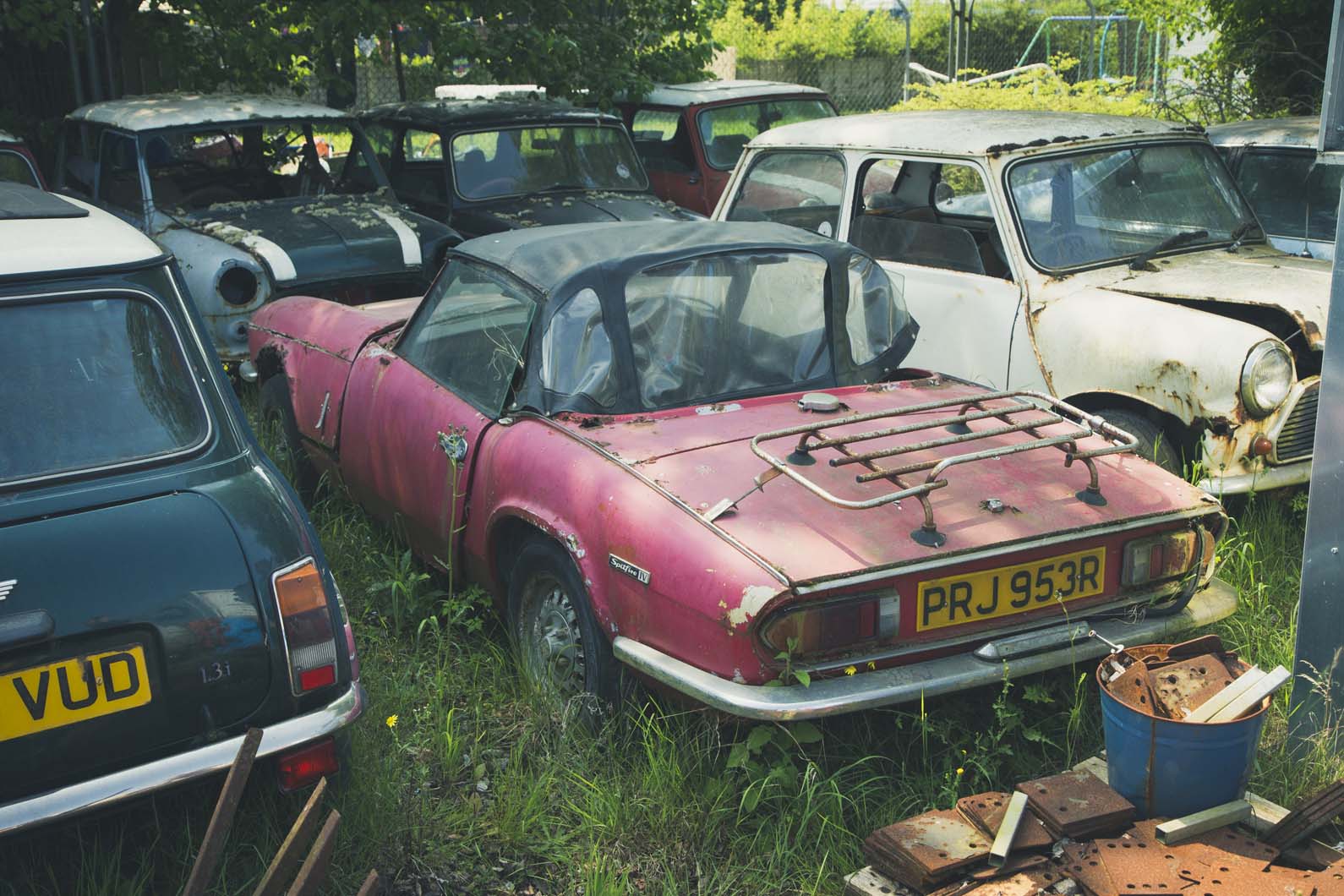
In a second shed, I am greeted by the sight of at least 15 cars, some of them are stored by Nigel’s team, the rest roadworthy and in original condition. They include a 1988 Ford Sierra Cosworth, a 1936 Vauxhall 14-6 and a Scimitar GT. Also, a Rover 75, a handful of Jags and Daimlers, a Mini Cooper, a Ford Granada Mk2, an Austin A35, a Triumph Dolomite and a London taxi.
Among them stands another of Nigel’s completed restoration projects, and his favourite car, a Morris 1100. “It’s one of the first we restored,” he tells me. “I must have scrapped hundreds of these. I’d cut the doors off, tip the shell over to get underneath and then cut through the front subframe to get the engine out. Then I’d attack the chassis with an axe. Most were so rotten, only the Hydragas suspension was holding them together. ”
The museum Nigel is planning “will celebrate saving and rescuing stuff, including cars”, he said. “It’ll be the antidote to today’s throwaway society. ”
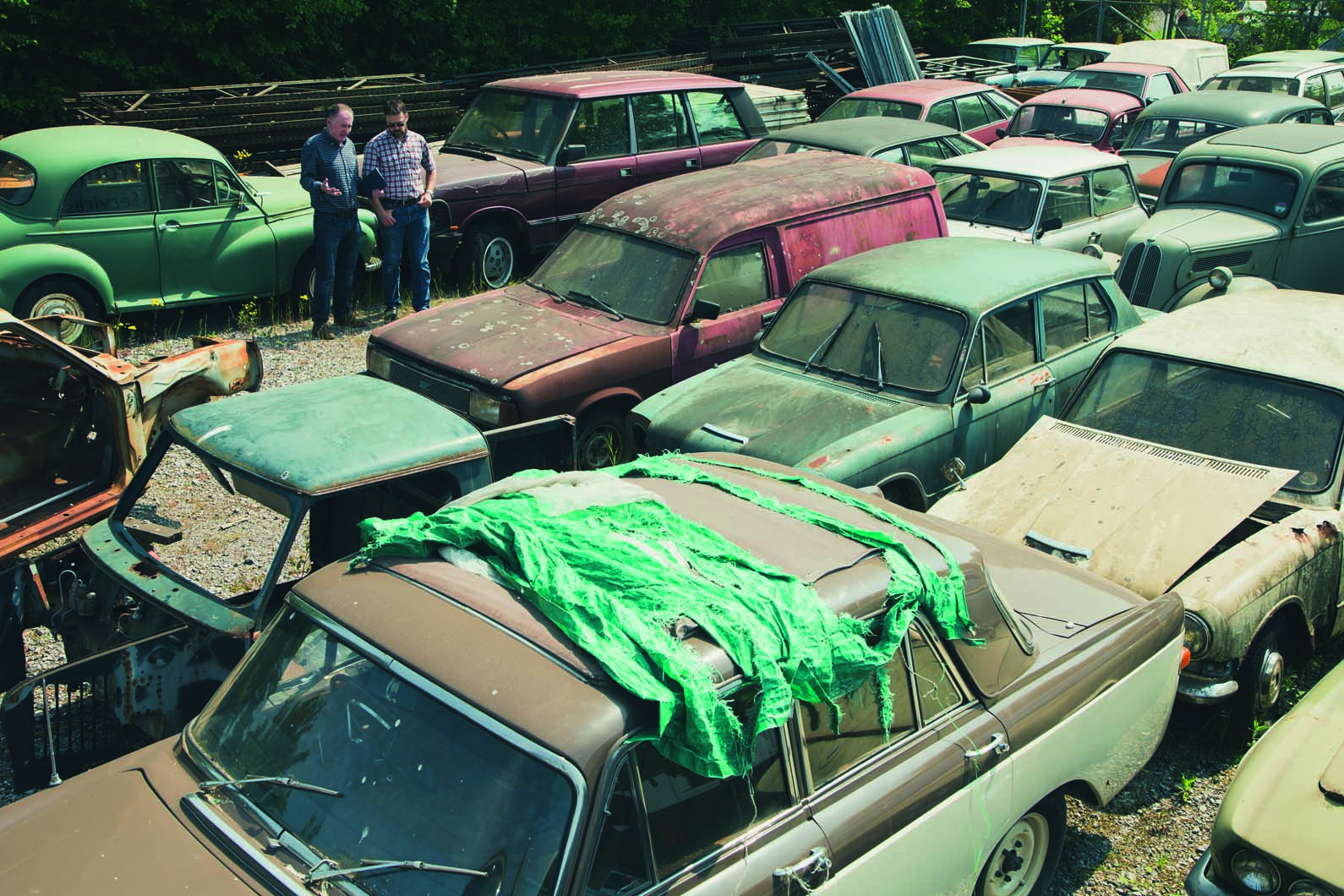
THE CITROEN GRAVEYARD
Dick Halcrow’s attachment to the Citroën CX – that large, luxurious fastback (there was also an estate) of 1974 to 1991 – is so strong that he can’t bear to part with all those he has ever owned. It’s led to what can only be described as a bit of a parking problem. Where most of us require space for just a couple of cars on our driveway, Dick has had to find room for eight. Where we might leave the patch of garden immediately behind our front gate free for access, Dick has deposited two more. And where, at the far end of our property, we might lovingly cultivate a vegetable patch, Dick has had to stash a further eight.
In all, he has had to find space for 16 CXs and two XMs. His collection of CXs features examples of both Series One (1974-85) and Two (1985-91) models. It includes at least four seven-seat Familiales (one of them a former funeral car) and a pair of CX 25 GTi Turbo fastbacks.
The years they have spent on his drive way and in his garden have taken their toll: paint has faded, window rubbers have grown hard and brittle, rust is rampant. Unable to grow in the garden, plants are growing in cars. Doubtless you’re wondering why he doesn’t solve his parking problem by simply getting shot of these Gallic masterpieces – but then you haven’t met Dick. His passion for the CX is intertwined with his former work as an aircraft systems engineer. He worked at Heathrow for 43 years, first by maintaining Lockheed TriStars and Vickers Viscounts, and ending his career on the Airbus A320 family. Retirement, three years ago, felt like a bereavement.

“It was engrossing work,” he tells me. “Even on my days off, I’d be thinking about problems with a plane’s hydraulic system or an engine and trying to solve them. I was born to be an engineer and I will always be one.”
And there lies the root of his attachment to his 16 CXs in particular. Simply, he loves the model’s advanced engineering and, in particular, its hydropneumatic suspension and related systems.
“Like an aeroplane, a CX relies on hydraulics to function,” says Dick. “Once I had my first whiff of LHM fluid [used in the CX’ s hydraulics], I was hooked.”
In its launch preview of the CX in 1974, Autocar praised what it described as Citroën’s “unique devotion to advanced engineering”. It went on: “Each of its cars is designed to be ahead of its time.”
Unfortunately, time has caught up with Dick’s CXs. They look fit for only one place – but tell their owner at your peril. “Breakers come here saying they ’ll take them away for me but I tell them to get lost,” says Dick.“I just can’t throw away good engineering that can be repaired or restored and given a second life.”
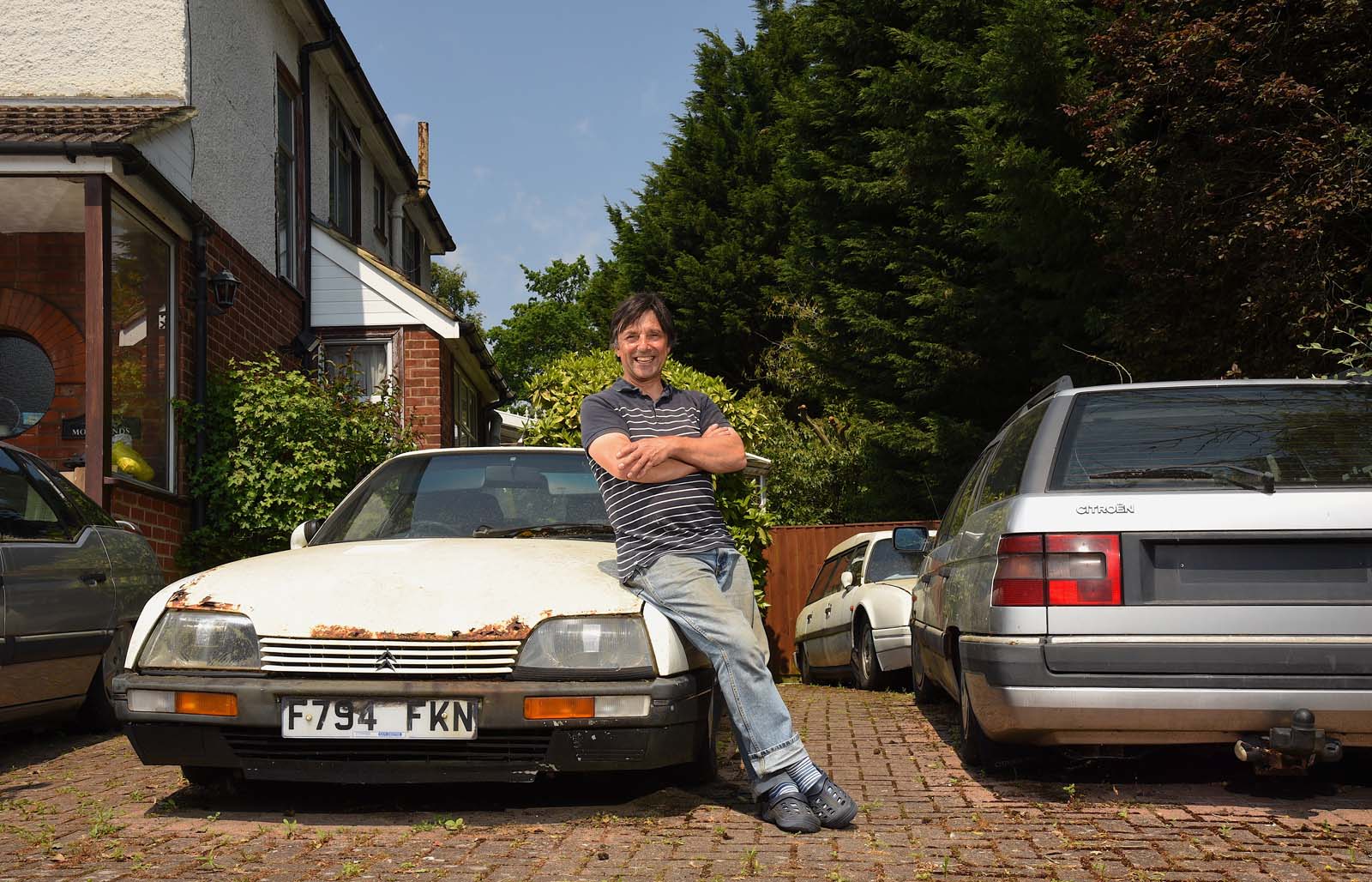
Dick’s love affair with the CX began in 1990 when he bought a Series One seven-seat Familiale. Even then, it was nine years old.
“It was my first experience of a CX,” he says. “The ride comfort was extraordinary and the brakes were incredibly powerful. It was a technical tour de force. Inevitably, the hydraulic pipes rotted through. I replaced them with copper nickel ones; they ’ll outlast us all.”
Which, unfortunately, cannot be said of the rest of the car, which now rests on its deflated tyres in Dick’s garden, quietly disintegrating. Dick admits that replacing the pipes was actually where he went wrong.“ Having gone that far, I couldn’t bear to part with it,”he says.
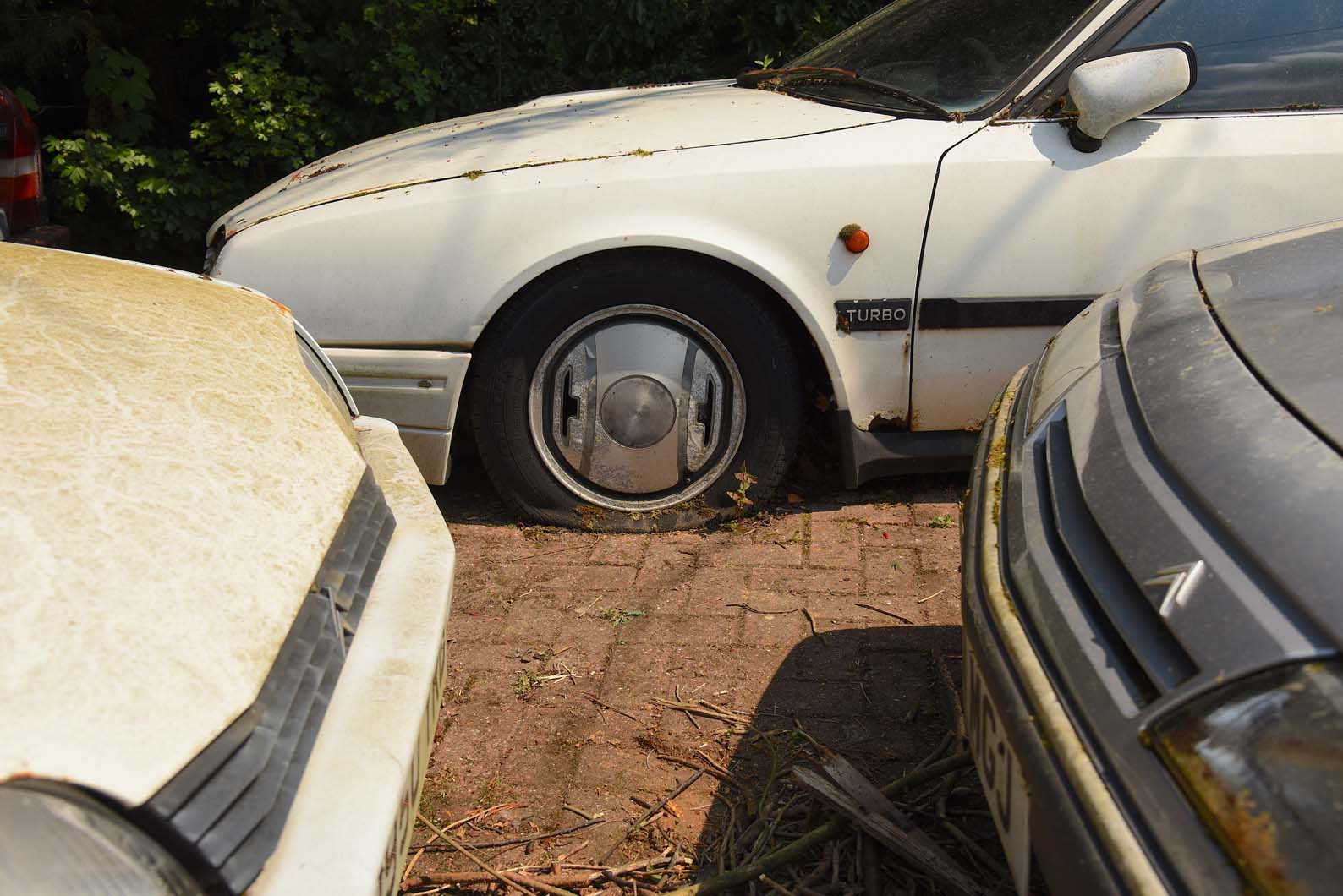
It set the pattern for the 15 CXs that followed. Such was his passion that, far from taking his own CXs to the breakers, he rescued some from scrapyards. When anyone offered him one, he accepted it without hesitation.“I’ve been a donkey sanctuary for CXs,” he admits.
What would persuade him to get rid of the lot? “The world’s best CX,” Dick says, simply.
If any of his neighbours are reading this, as this is written there’s a mint, low-mileage, 1987-registered Citroën CX 25 auto for sale for £13,440. Fancy a whip-round?
The UK trend of scrapping cars
Dick Halcrow’s collection of 18 decrepit Citroën CXs and XMs reflects changing trends concerning end-of-life vehicles. The SMMT says the average age of a car at scrappage in 2015 rose to 13.9 years. Experts say this is partly because, as cars become more reliable, people are willing to run them into the ground.
At the same time, more cars that would otherwise have gone to breakers’ yards are being abandoned. Councils have revealed that, in 2012, 40,876 cars were reported as abandoned. By 2016, this figure had risen to 147,616.
The cost of scrapping a car is often given as a reason for abandoning them. However, Autocar has found there’s still money to be made from an end-of-life vehicle. We visited cartakeback.com, which collects and disposes of scrapped cars responsibly. Based on the registration number of one of Dick’s CXs, it generated a collection and scrap payment of £135. He could be sitting on a modest fortune.
THE MAN WITH 70 SKODAS
Mark Torok says his love affair with Skodas has, at times, got a little out of hand.
“There was a stage in my life when I was buying Skodas like other people buy groceries,” he admits.
In just 10 years, the Skoda enthusiast has amassed a collection of more than 70 cars for what he calls his ‘Skoda orphanage’, many of them dating from the company’s transition period in the 1990s.
The oldest is a 1973 S110 DeLuxe that Mark rescued from a scrapyard in the Czech Republic. The newest is a 2006 Skoda Superb V6 that he saved from re-export to eastern Europe. His favourite is an original ‘stretched Passat’ Superb of 2002.

Mark says: “In the UK, people’s interest in Skodas stops at the Estelle and starts again with the Skoda Fabia and Skoda Octavia of the 2000s. Sadly, the Favorit and Felicia in between are trapped in that no man’s land of obscurity. That’s where I come in.”
Mark’s Skodas live barn-find style in assorted farm buildings but his aim is to get them together under one roof. For the time being, the main thing is that they are safely hidden away from the scrapyard.
Remarkably, most of them require just basic recommissioning and a good wash. Skoda can trace its origins to 1895 when it was founded as Laurin & Klement. It made its first car in 1905 and was renamed Skoda in the 1920s. A succession of well-regarded models followed until progress was interrupted by World War II. The firm barely recovered under communism and, by the 1980s, ‘Skoda’ was a byword for unreliability.
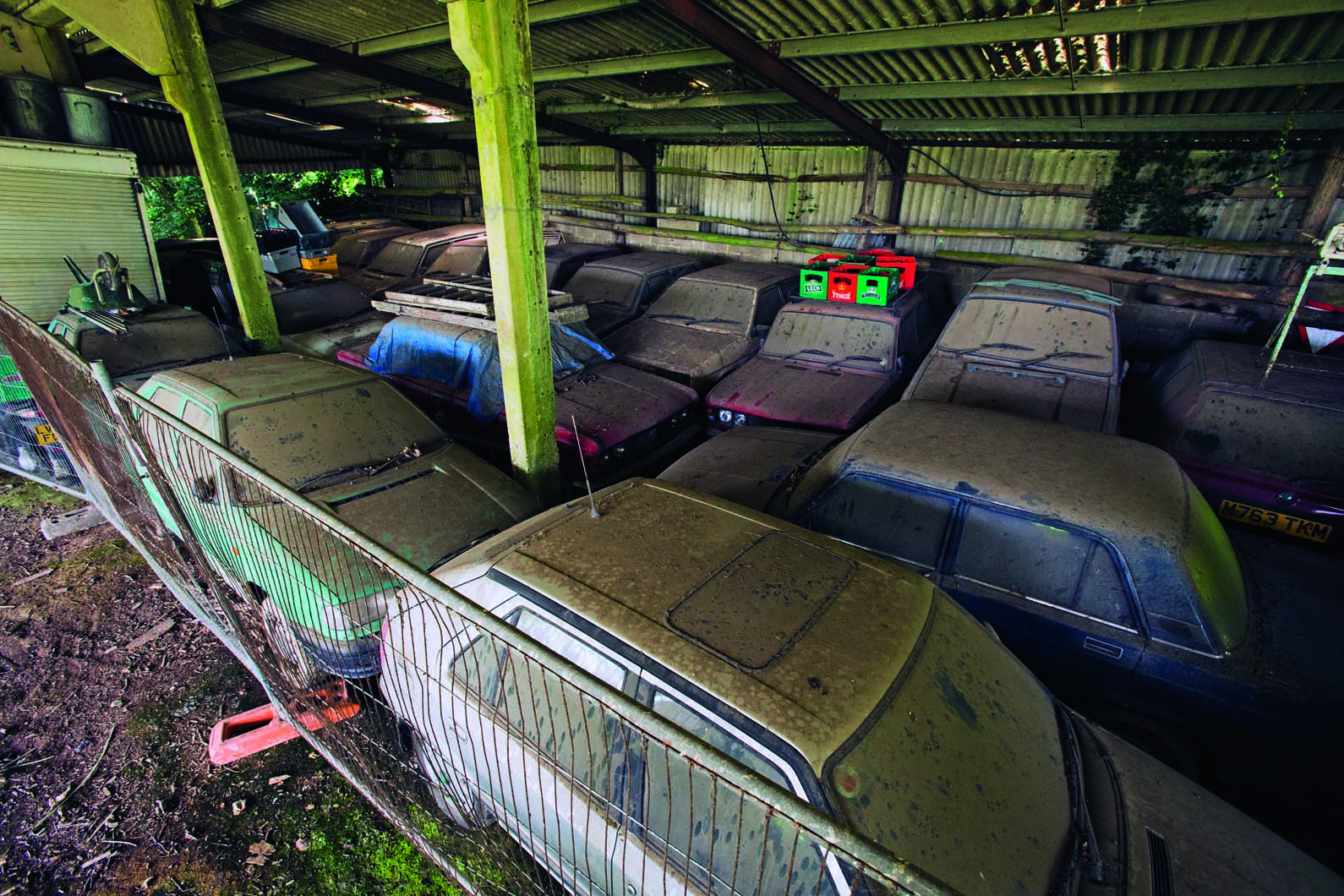
With the fall of communism and the arrival of new partner Volkswagen, things began to improve and a succession of impressive new models including the Favorit, Felicia and Skoda Fabia helped prepare the ground for the brand’s revival.
“My grandfather was the biggest Skoda fan going and got me hooked on the company,” says Mark. “It’s been fascinating seeing the firm develop and grow. I often wonder what he would make of it all now.” He says the UK scraps and wastes cars far too quickly and believes there’s never been a more important time to secure vehicles such as his Skodas for preservation: “People say I am wasting my time but my girlfriend Victoria says they are not thinking in the fourth dimension, as Doc Brown does in Back to the Future. She says I am creating a treasure trove that will delight future fans of the Skoda marque.
“The doors to my orphanage will always be open to any unwanted Skoda. I will be to Skoda what the Schlumpf brothers were to Bugatti!”
This article was originally published on 26 August 2018. We're revisiting some of Autocar's most popular features to provide engaging content in these challenging times.
Read more
Matt Prior: Is it time to scrap scrappage schemes?
The dark side of owning a car collection
Virtual Tour: inside a 400 car personal collection

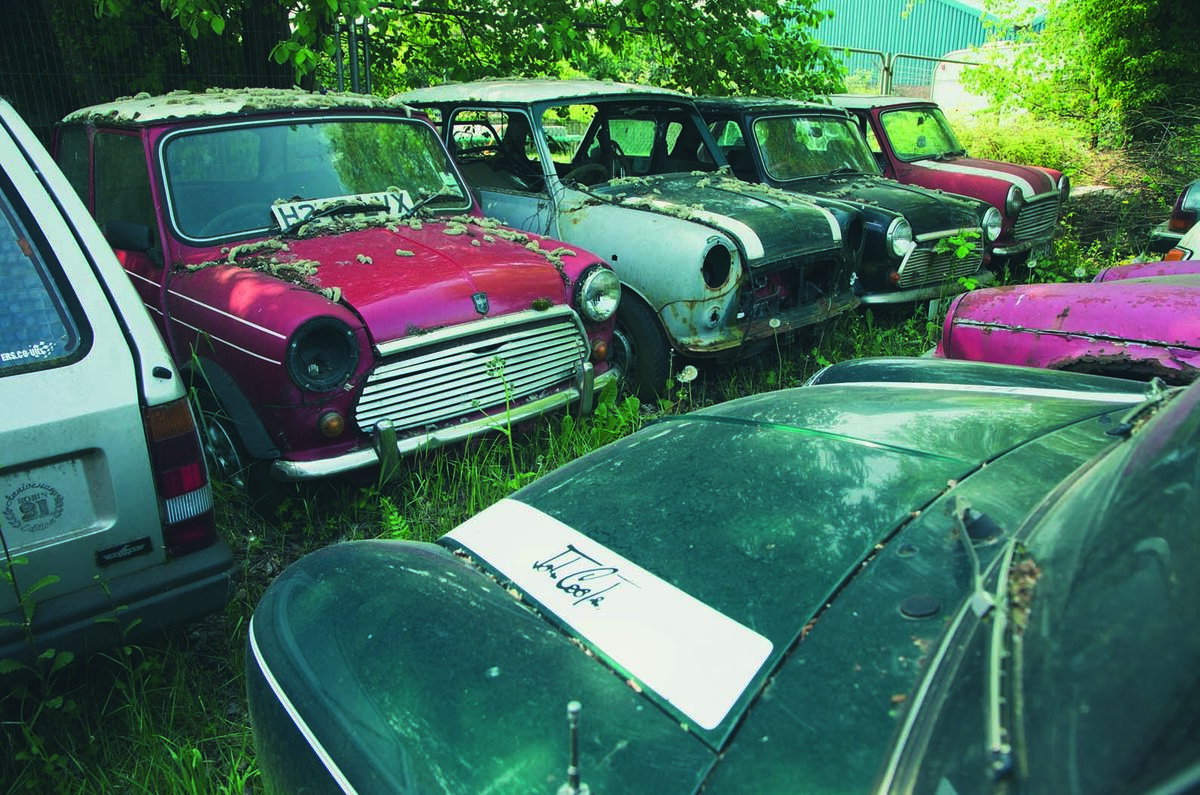






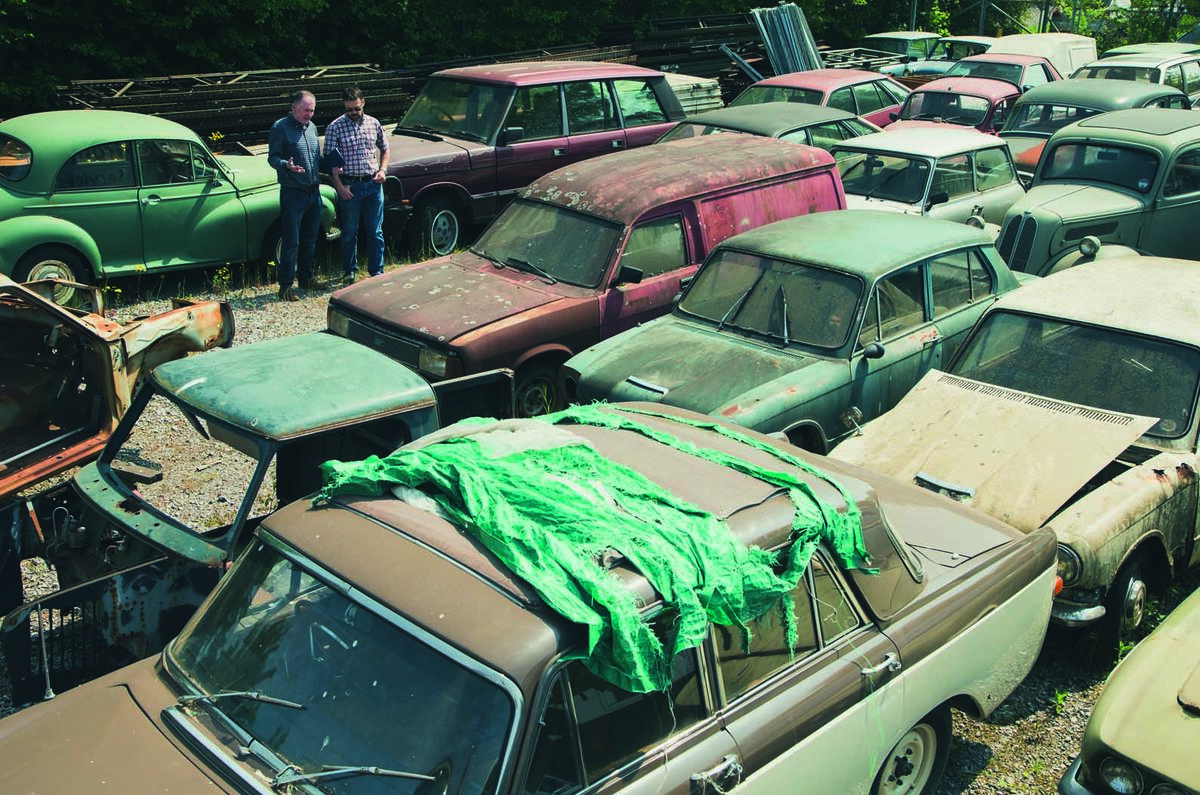















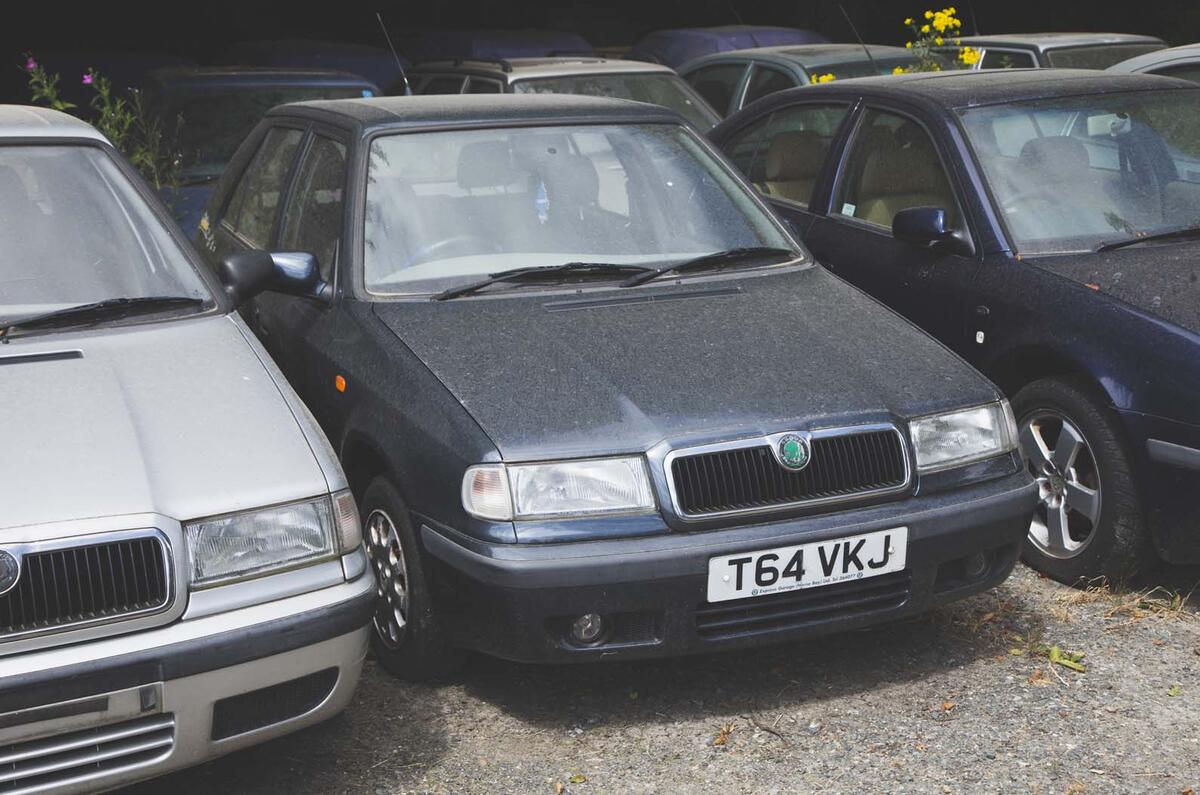




























Join the debate
Add your comment
i think these guys perform a
i think these guys perform a useful task. One day the parts in these cars will be very useful for someone, even if the cars them selves are beyond slavation. There was a time when you could hardly give away an E Type. Who wouldnt mind having a shed full of them now? I am not saying i would choose to live next door to someone like this, and of course it would be better if they were undercover and out of sight.
Hoarders and dreamers.
Not if they've rotted away they won't.
.
"Find a used car on Pistonheads"
Ha! You must be joking.. The sales section of that website is a disaster. Their IT guy should be flogged.
This goes beyond being an enthusiast
Have to agree with the other posters, as fascinating as these collections are, leaving them in your garden to rot does no good to anyone. Why not use some car covers? Not perfect but it would help, though even storing them in a barn can't permanently stave off deterioration unless you want to invest in a climate controlled barn. I'm afriad this is more about hoarding than being a motoring enthusiast. There is already legislation in place that allows Council's to deal with untidy land and the garden with all the CXs risks attention from the Local Authority.